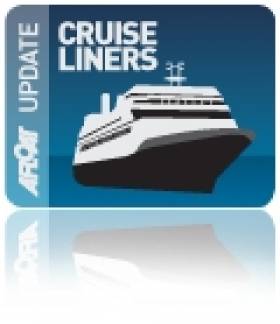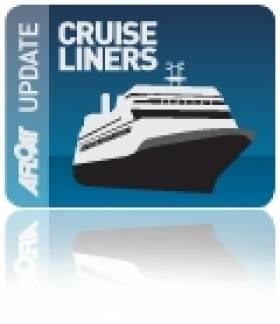Displaying items by tag: Galway Port
'Fast-Track' On Cards For Revived Galway Port Development Plans
#GalwayPort - Revived plans for the €200 million redevelopment of Galway Port may take a great leap forward in the next few weeks with the publication of a new policy document by the Minister for Transport.
The Galway City Tribune reports that Minister Leo Varadkar will release a 'Port Policy Statement' containing key recommendations for a development planning application to be made under IROPI (Imperative Reasons of Overriding Public Interest) legislation.
As previously reported on Afloat.ie, plans for a new deeper port in Galway Harbour were revived in August 2012 as harbour bosses sought to exercise a clause in the EU habitats directive.
Galway Harbour Company chief executive Eamon Bradshaw said at the time that the company was taking a new route after examining previous planning applications involving sensitive habitats.
He pointed out that under article 6.4 of the EU habitats directive, applications for projects classified under IROPI legislation allow developers to compensate for any infringement on sensitive habitats by restoring an area of a similar size in a different location.
It's now expected that the IROPI 'fast-track' will be approved if the Galway Harbour Company can prove that the port will have a significant economic benefit to bot the region and Ireland as a whole.
The Galway City Tribune has much more on the story HERE.
Call Opens Galway Harbour Cruiseship Season
#CRUISE LINERS – Galway Harbour Company welcomed the first cruise caller this year with the Silver Explorer an expedition cruiseship with a capacity for over 130 guests, writes Jehan Ashmore.
The 6,072 tonnes vessel is on a cruise from Bordeaux and her most recent ports of call have been to Glengariff and Waterford. This evening the ship heads for Killybegs where passengers will visit the north-west.
For the rest of the season Galway port is scheduled for eight more cruise calls. Two cruise calls are scheduled in mid-August while the Silver Explorer is to make a return visit later that month. She is no stranger to Irish waters having served as the former Prince Albert II.
Small Luxury Cruiseship Visits Killybegs
In 2004 Killybegs received a significant boost in the completion of a €50m outer harbour with berthing quays totalling 350-metres long so to accommodate the north-west fleet and to include the 'supertrawlers'.
Despite the major port infrastructural investment, Killybegs has seen declining fortunes in the fish industry though in recent year's new business from the offshore exploration and cruise ship industries has assisted in generating new revenue.
Cruise-Goers Head for the Galway Races
The vessel first visited Galway in 2009 but this call will be her last year operating under the Spirit of Adventure cruise banner. The company are to replace the vessel next season with the Saga Pearl II which will be transferred from the parent company Saga Cruises and renamed Quest for Adventure.
Prior to the Spirit of Adventurer's call, the 226 passenger Le Diamant arrived from St. Malo last Friday. She became the first vessel to make a call to the 'City of the Tribes' on behalf of her French operators, Cie de Ponant. Her passengers were taken on tours of the city, Connemara and the Aillwee Caves in neighbouring Co. Clare. The vessel is due to return early next month.
With three cruise-calls this year the port is set to increase this figure to 7 in 2012 arising from the ports campaign over the last two years. Paul Carey, Chairman of the Harbour Company, said "We are beginning to see the fruits of this campaign and look forward to growing Galway's association with the return of the majestic passenger liners to Galway".
"The passenger liner The World has been confirmed for a two-day visit in August 2013 which is a great endorsement of Galway as a cruise destination".
The call by the world's first ocean-going luxury resort vessel will also be another first for Galway. Operators of the 43,524gt vessel, Residences at Sea have made previous Irish ports of call to include Dublin, for more on her to the capital last August click HERE.
- Dublin Port
- Galway Bay
- Foynes
- Shannon Estuary
- The World
- Cruiseships
- Ports and Shipping News
- city of the tribes
- Galway Harbour
- Galway Harbour News
- Mutton Island
- Le Diamant
- Cruiseliners
- Saga Cruises
- Spirit of Adventure Cruises
- Spirit of Adventure
- Galway Harbour and Bay news
- Galway Port
- Port of Galway Company
- Ponant Cruises
- Galway Races
- The Galway Races Ballybrit
- Ballybrit Race Course
- Port of Foynes
- Saga Pearl II
- Quest for Adventure
- Shannon Estuary and port news
- The World cruise liner
- Residences at Sea
- The World Residences at Sea
- Irish cruise ports of call
- Irish cruise calls
- Cruiseships to Ireland
- Cruise Companies visiting Ireland
- West of Ireland cruise callers

































































